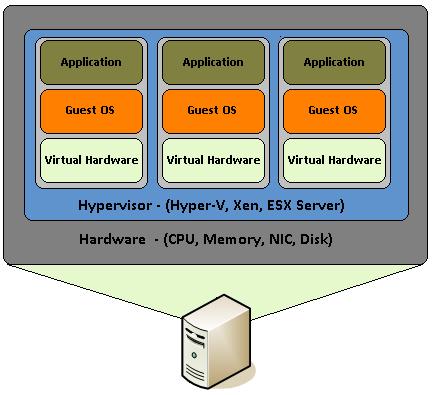Virtualisation (or virtualization to the rest of the world) is widespread within IT and quickly being adopted for OT systems. The technology has proven reliable and brings significant benefits.
Control system server virtualisation reduces the number of physical servers required and provides greater control over how services are managed and run. For systems with a large number of servers there are also significant cost savings available.
The move to virtualised servers requires additional hypervisor software and specialist hardware to 'host' the 'guest' operating systems (OS) and applications. A proportion of the hosts' computing resources are allocated to each guest OS using virtual hardware.
It is the cost of the hypervisor software and higher specification server hardware that makes virtualisation expensive for small numbers of guest OSs.
You may already have virtualised servers as part of your control system architecture, or even use the technology along with thin clients to replace 'traditional' operator workstations. But those yet to implement the technology often question whether the added complexity is worth it.
Kwesterh, via Wikimedia Commons
If you are in this position, I suggest evaluating the pro's and con's below, then consider whether virtual machines (VM) are a good fit for your organisation:
- How many machines would you virtualise?
- Do you have staff with the necessary skills and expertise?
- Are your current systems maintained in-house or by a third party?
- Do you have any serial, or other legacy, interfaces?
- Will the time savings and performance benefits offset the cost?
Advantages
- Reduces power consumption and cabinet space required
- Allows centralised management
- Support for different/legacy operating systems
- Ease of backup and restore
- Allows centralised management
- Disconnection between hardware and software
- Improved reliability and availability
- Users lack direct access to hardware
- Load balancing and hardware optimisation
- Reduce time to create isolated test/development environments (sandboxes)
- Facilitates upgrade and migration projects
Disadvantages
- Compatibility with legacy communication protocols
- Users lack direct access to hardware
- Additional 'layer of complexity'
- Extra cost of hypervisor software
The lists above are not meant to be comprehensive, more an executive summary to provide a starting point. Every organisation will have different requirements and existing practices which will determine whether VMs are the best solution.
If you have any questions, or would like to discuss whether virtualisation would help your operations, get in touch.

